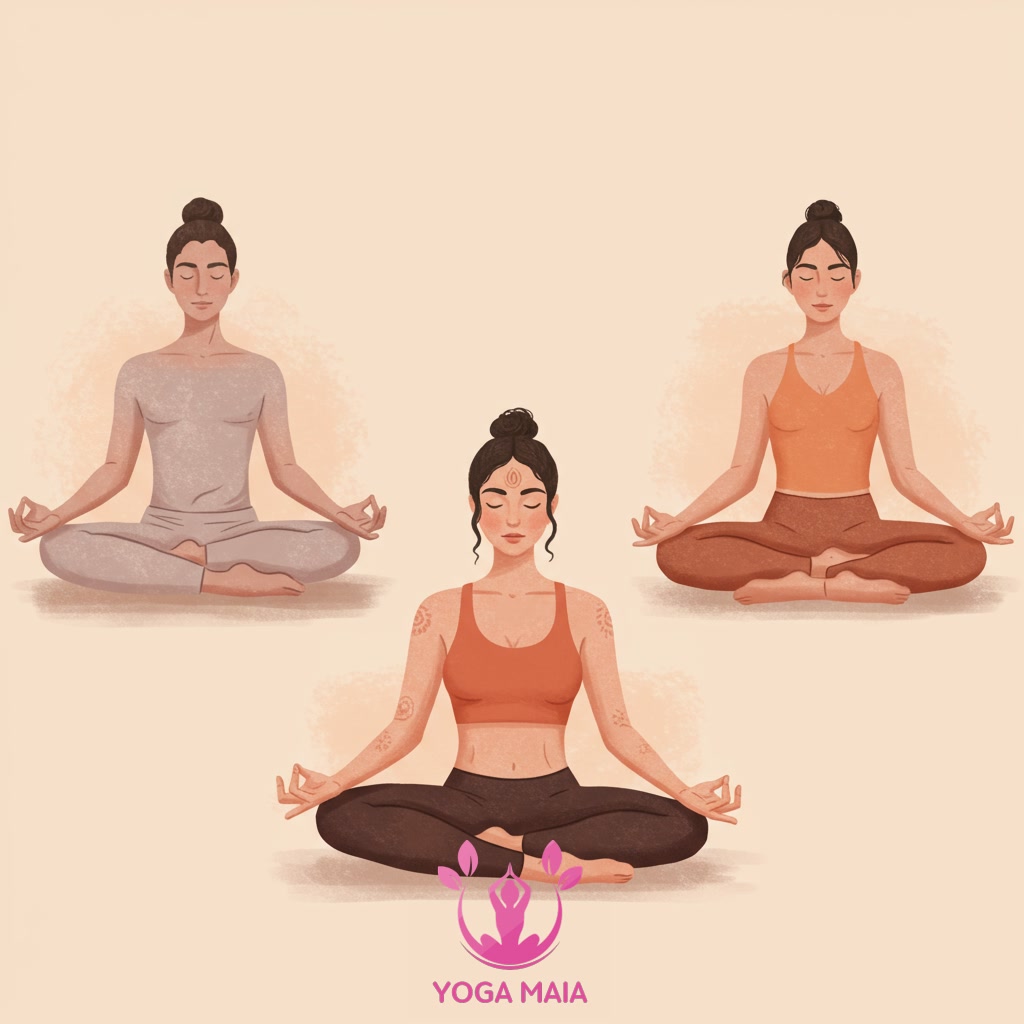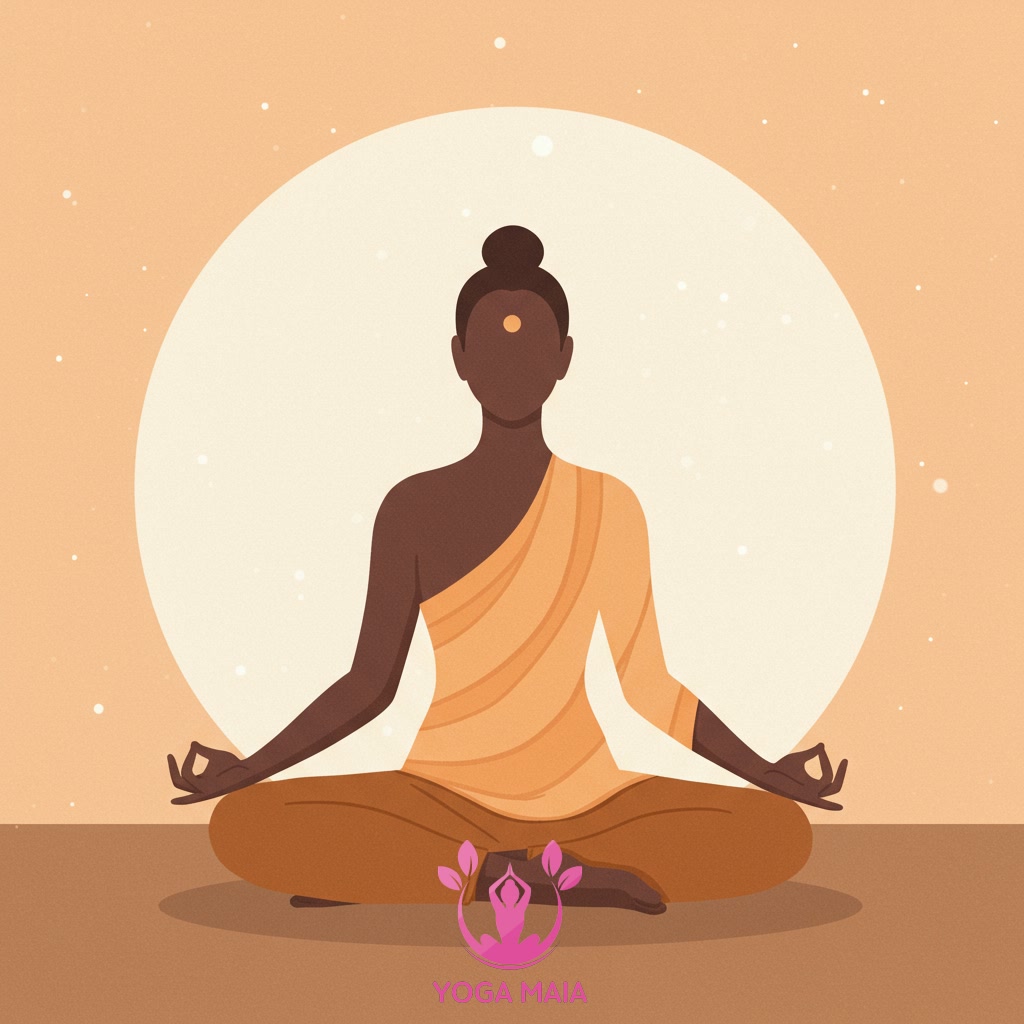Yoga Blog
Exploring the Profound Connection Between Yoga and Buddhist Practice

This exploration delves into the profound connection between yoga and Buddhist practice. It examines how both traditions offer complementary paths towards cultivating inner peace and spiritual understanding. The discussion highlights shared principles such as mindfulness, ethical conduct, and meditative techniques, illustrating the synergistic relationship between practicing yoga and engaging with Buddhist principles. Understanding this deep link reveals how yoga can serve as a powerful support within the broader framework of Buddhist cultivation.
Table of Contents
- Section 1: Introduction: Understanding Yoga and Buddhist Practice
- Section 2: Historical Intertwining: Roots and Parallel Paths
- Section 3: Shared Philosophical Ground: Ethics, Mindfulness, and Liberation
- Section 4: Converging Practices: Meditation, Physical Discipline, and Breathwork
- Section 5: Synergistic Benefits of Integrating Yoga and Buddhism
- Section 6: Conclusion: Embracing the Profound Connection
Section 1: Introduction: Understanding Yoga and Buddhist Practice
This exploration begins by establishing a foundational understanding of both Yoga and Buddhist practice. Yoga, originating in ancient India, is a multifaceted discipline traditionally encompassing physical postures (asana), breathing techniques (pranayama), meditation, and ethical principles, all aimed at cultivating physical, mental, and spiritual well-being. Buddhist practice, on the other hand, stems from the teachings of Siddhartha Gautama, the Buddha, and focuses primarily on ethical conduct, meditation (especially mindfulness and concentration), and the development of wisdom to understand the nature of reality and alleviate suffering. While distinct in their historical origins and philosophical frameworks, both traditions offer profound paths for inner transformation and the pursuit of peace and liberation. This introductory section serves to briefly define these two rich traditions before delving into the intricate ways they can intersect and complement each other.
 Introduction: Understanding Yoga and Buddhist Practice
Introduction: Understanding Yoga and Buddhist Practice
Section 2: Historical Intertwining: Roots and Parallel Paths
Building upon the foundational understanding, this section explores the shared historical landscape from which both Yoga and Buddhist practices emerged. Originating in ancient India around the same period, approximately in the mid-first millennium BCE, both traditions developed within a rich tapestry of philosophical and ascetic movements. While distinct in their ultimate aims and doctrines – Yoga traditionally focusing on union with the divine or self-realization through physical and mental discipline, and Buddhism on liberation from suffering through the Four Noble Truths and Eightfold Path – they shared a common vocabulary of concepts like karma, samsara, and liberation (moksha/nirvana). Early forms of both involved rigorous meditative practices, ethical conduct, and a focus on understanding the nature of mind and reality. This parallel development and mutual influence highlight their deep historical intertwining, suggesting a shared cultural and intellectual bedrock in ancient India.
 Historical Intertwining: Roots and Parallel Paths
Historical Intertwining: Roots and Parallel Paths
Building upon the shared historical roots, Yoga and Buddhist practices converge significantly on philosophical ground, particularly regarding ethics, mindfulness, and the ultimate aim of liberation. Both traditions lay a strong foundation in ethical conduct (like *yama* and *niyama* in Yoga or *sila* in Buddhism), recognizing that virtuous living is essential for cultivating inner peace and spiritual progress. Mindfulness, the practice of present-moment awareness without judgment, is a cornerstone in both paths, refined through meditation and integrated into daily life. This cultivation of awareness and ethical foundation serves as the pathway towards liberation from suffering and the cycle of rebirth (*moksha* or *nirvana*), highlighting a profound, shared understanding of the journey towards spiritual freedom and insight.
 Shared Philosophical Ground: Ethics, Mindfulness, and Liberation
Shared Philosophical Ground: Ethics, Mindfulness, and Liberation
Section 4: Converging Practices: Meditation, Physical Discipline, and Breathwork
Building upon the shared philosophical foundations, Yoga and Buddhist practices find significant convergence in their practical application, particularly through meditation, physical discipline, and breathwork. Both traditions emphasize meditation as a core method for cultivating concentration, mindfulness, and insight into the nature of reality. Yoga incorporates physical postures (asanas) not merely for flexibility but to prepare the body for stillness in meditation and to cultivate awareness of physical sensations. Similarly, Buddhist practices often include forms of walking meditation or mindful movement. Breathwork, such as Pranayama in Yoga and various breath awareness techniques in Buddhism, serves as a vital link between body and mind, helping to calm the nervous system, focus attention, and deepen meditative states. These converging practices offer tangible tools for practitioners on both paths to embody ethical principles and progress towards inner peace and liberation.
 Converging Practices: Meditation, Physical Discipline, and Breathwork
Converging Practices: Meditation, Physical Discipline, and Breathwork
Section 5: Synergistic Benefits of Integrating Yoga and Buddhism
Building upon the shared practical foundations, integrating Yoga and Buddhist practices yields powerful synergistic benefits. The physical discipline and mindful movement of yoga cultivates bodily awareness and prepares the mind for deeper stillness, complementing Buddhist meditation techniques like Vipassanā or Samatha. Conversely, the ethical framework and philosophical insights of Buddhism provide a broader context and intention for the yoga practice, transforming it from mere physical exercise into a path of cultivation towards compassion and wisdom. This combined approach fosters not only enhanced physical health and mental clarity but also accelerates progress in developing equanimity, concentration, and insight, leading to a more holistic and integrated spiritual journey. The synergy lies in how each tradition strengthens and illuminates the other, creating a more robust and effective path towards inner peace and liberation.
 Synergistic Benefits of Integrating Yoga and Buddhism
Synergistic Benefits of Integrating Yoga and Buddhism
Section 6: Conclusion: Embracing the Profound Connection
In conclusion, the exploration reveals that Yoga and Buddhist practice are not separate, competing paths, but deeply interconnected traditions offering complementary approaches to inner transformation. Building upon shared ethical foundations and practical disciplines like mindful movement and meditation, integrating these practices cultivates profound synergistic benefits. Yoga prepares the body and mind for deeper meditative states central to Buddhist cultivation, while Buddhist principles of wisdom and compassion enrich the physical and mental discipline of yoga. Embracing this connection allows practitioners to harness the strengths of both, fostering greater physical well-being, emotional balance, and spiritual insight on the journey towards liberation and peace. Recognizing this profound link empowers individuals to build a more robust and integrated path of self-discovery and spiritual growth.
 Conclusion: Embracing the Profound Connection
Conclusion: Embracing the Profound Connection












